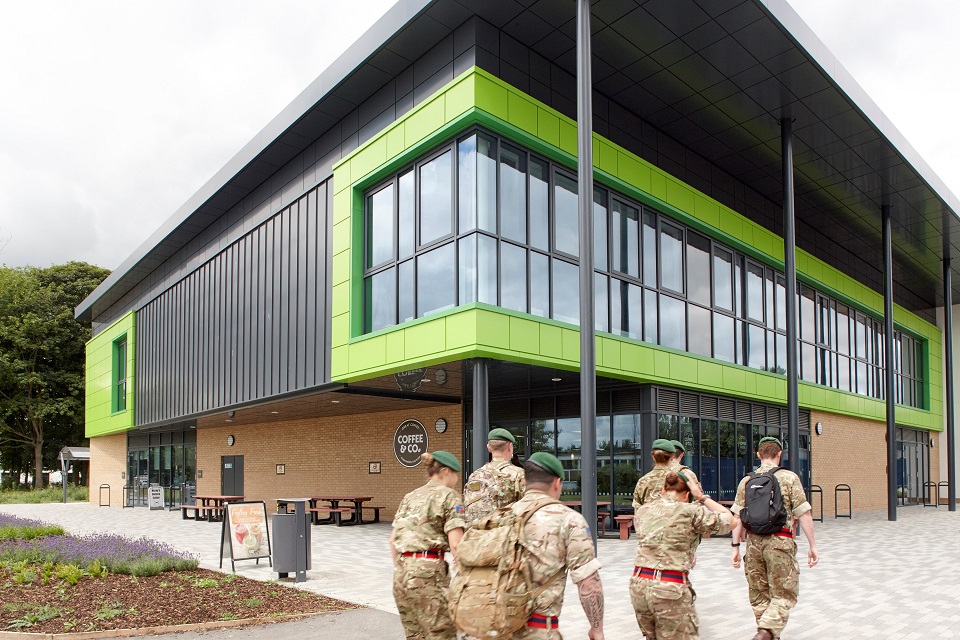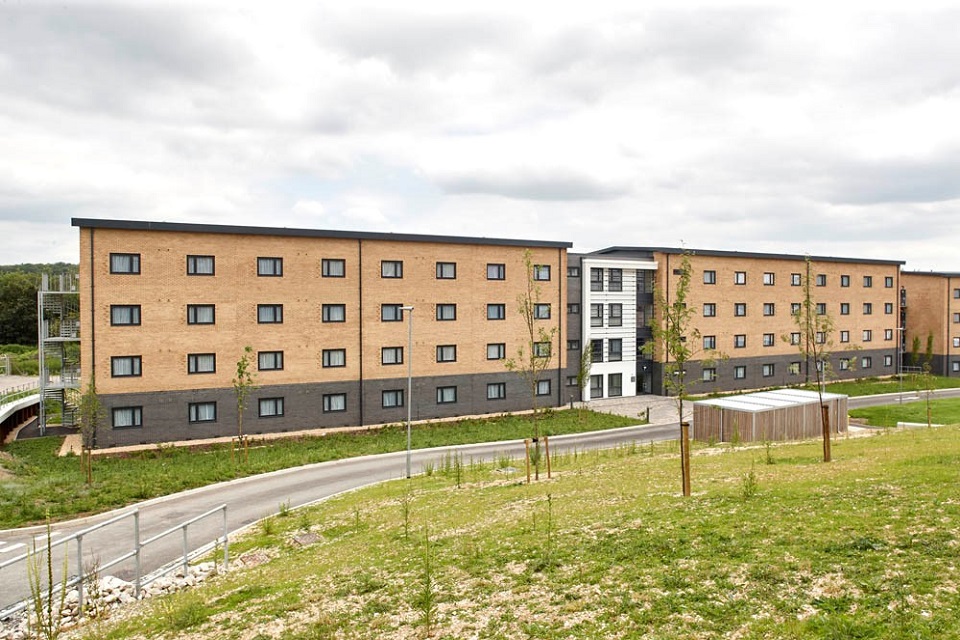News story: F-35 jets use new vertical landing pads at RAF Marham for the first time
To support the aircraft’s short take off vertical landing (STOVL) capability, the Defence Infrastructure Organisation is building three VLPs through its contractors, a joint venture between Galliford Try and Lagan Construction, at RAF Marham. The Norfolk site is the Main Operating Base for the F-35 in the UK.
The F-35’s STOVL capability will provide operational flexibility including landing on the Royal Navy’s new Queen Elizabeth Class aircraft carriers. Initial flight trials of the F-35 Lightning aircraft from HMS Queen Elizabeth are on track for 2018, allowing a coherent build-up towards delivering a carrier strike capability for the UK from 2020.
Construction presented a significant engineering challenge. Due to standard concrete not being suitable, the design team had to source special materials from Germany to make a concrete which has the ability to withstand the high temperatures created by aircraft engines. Without this there would be a risk of cracking which in turn could present significant risk to the aircraft. This was the first time this material has been used outside the USA and required a rigorous testing process to ensure the landing pads were fit for purpose.
Lt Col Ian Jenkins, Defence Infrastructure Organisation Project Manager for the VLPs, said:
Vertical landing is a really exciting military capability and from an infrastructure perspective it’s been fascinating to be involved in the design and construction process. It was really exciting and rewarding to see an F-35 landing on the first vertical landing pad to be finished and I look forward to seeing more as we continue to work on other infrastructure upgrades required for the F-35s.
Each landing pad measures 67m long and 67m wide, with a central landing area of 30.5m by 30.5m.
Four F-35B Lightning aircraft arrived at their new home at RAF Marham on 6 June this year, starting the build-up of the newly-reformed 617 Squadron in the UK. The successful first use of these new VLPs is another step closer towards successfully reaching Initial Operating Capability for the UK by the end of the year.
In addition to its short take off and vertical landing capability, the F-35B’s unique combination of stealth, cutting-edge radar, sensor technology, and electronic warfare systems bring all of capabilities of a fifth-generation fighter.

